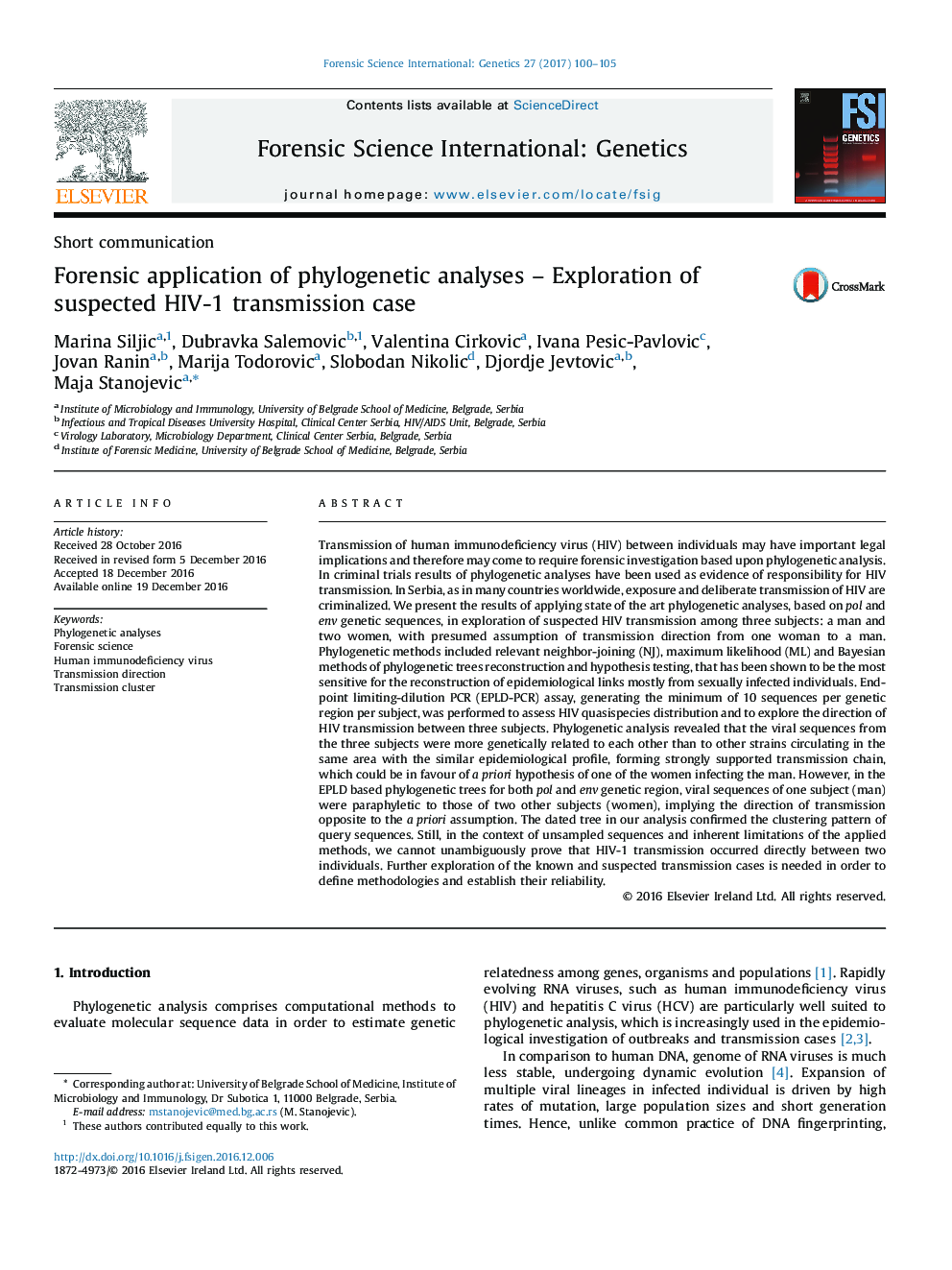| کد مقاله | کد نشریه | سال انتشار | مقاله انگلیسی | نسخه تمام متن |
|---|---|---|---|---|
| 6462923 | 1422151 | 2017 | 6 صفحه PDF | دانلود رایگان |
- We present phylogenetic exploration, based on pol and env sequences, of suspected HIV transmission.
- End-point limiting-dilution PCR (EPLD-PCR) assay was performed to assess HIV quasispecies.
- Viral sequences from the query subjects formed strongly supported transmission cluster.
- Tree topology with paraphyletic relationship implies direction of transmission.
- Further study of the known and suspected transmission cases needed.
Transmission of human immunodeficiency virus (HIV) between individuals may have important legal implications and therefore may come to require forensic investigation based upon phylogenetic analysis. In criminal trials results of phylogenetic analyses have been used as evidence of responsibility for HIV transmission. In Serbia, as in many countries worldwide, exposure and deliberate transmission of HIV are criminalized. We present the results of applying state of the art phylogenetic analyses, based on pol and env genetic sequences, in exploration of suspected HIV transmission among three subjects: a man and two women, with presumed assumption of transmission direction from one woman to a man. Phylogenetic methods included relevant neighbor-joining (NJ), maximum likelihood (ML) and Bayesian methods of phylogenetic trees reconstruction and hypothesis testing, that has been shown to be the most sensitive for the reconstruction of epidemiological links mostly from sexually infected individuals. End-point limiting-dilution PCR (EPLD-PCR) assay, generating the minimum of 10 sequences per genetic region per subject, was performed to assess HIV quasispecies distribution and to explore the direction of HIV transmission between three subjects. Phylogenetic analysis revealed that the viral sequences from the three subjects were more genetically related to each other than to other strains circulating in the same area with the similar epidemiological profile, forming strongly supported transmission chain, which could be in favour of a priori hypothesis of one of the women infecting the man. However, in the EPLD based phylogenetic trees for both pol and env genetic region, viral sequences of one subject (man) were paraphyletic to those of two other subjects (women), implying the direction of transmission opposite to the a priori assumption. The dated tree in our analysis confirmed the clustering pattern of query sequences. Still, in the context of unsampled sequences and inherent limitations of the applied methods, we cannot unambiguously prove that HIV-1 transmission occurred directly between two individuals. Further exploration of the known and suspected transmission cases is needed in order to define methodologies and establish their reliability.
Journal: Forensic Science International: Genetics - Volume 27, March 2017, Pages 100-105
